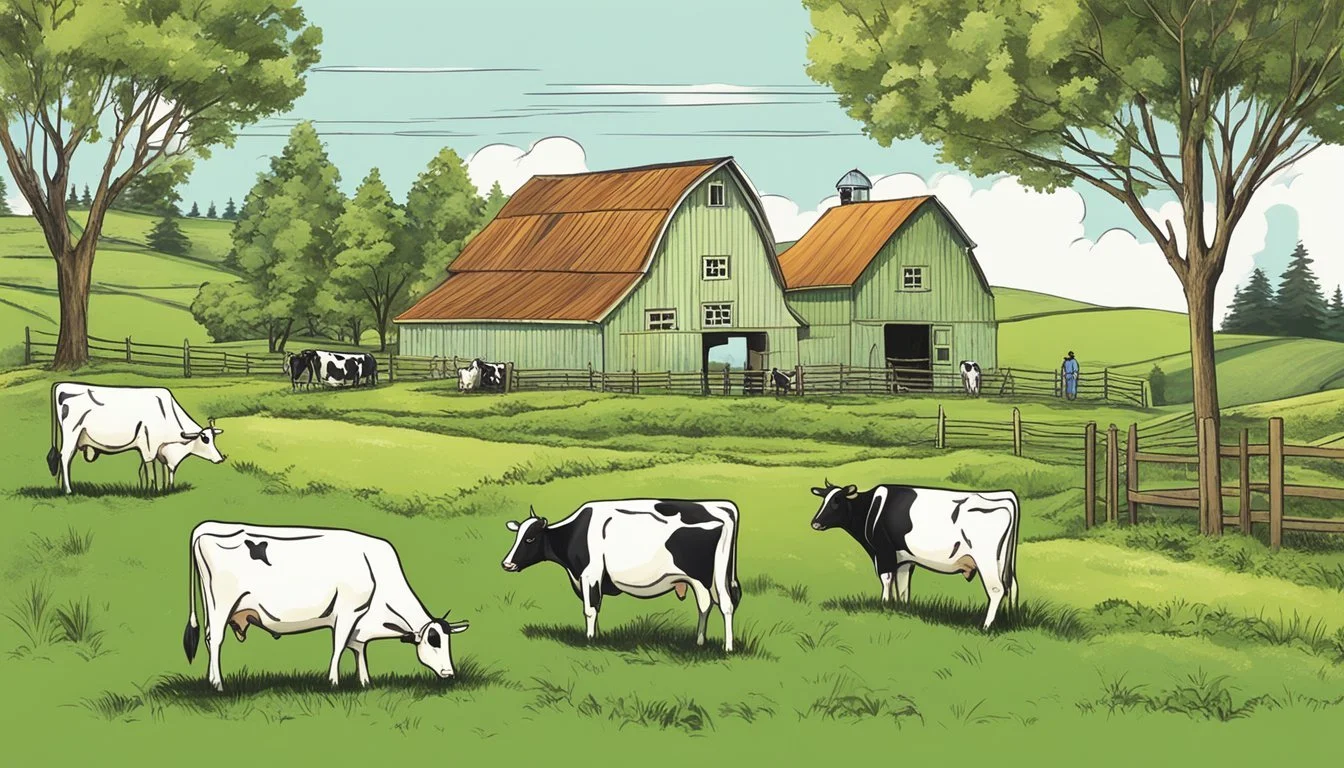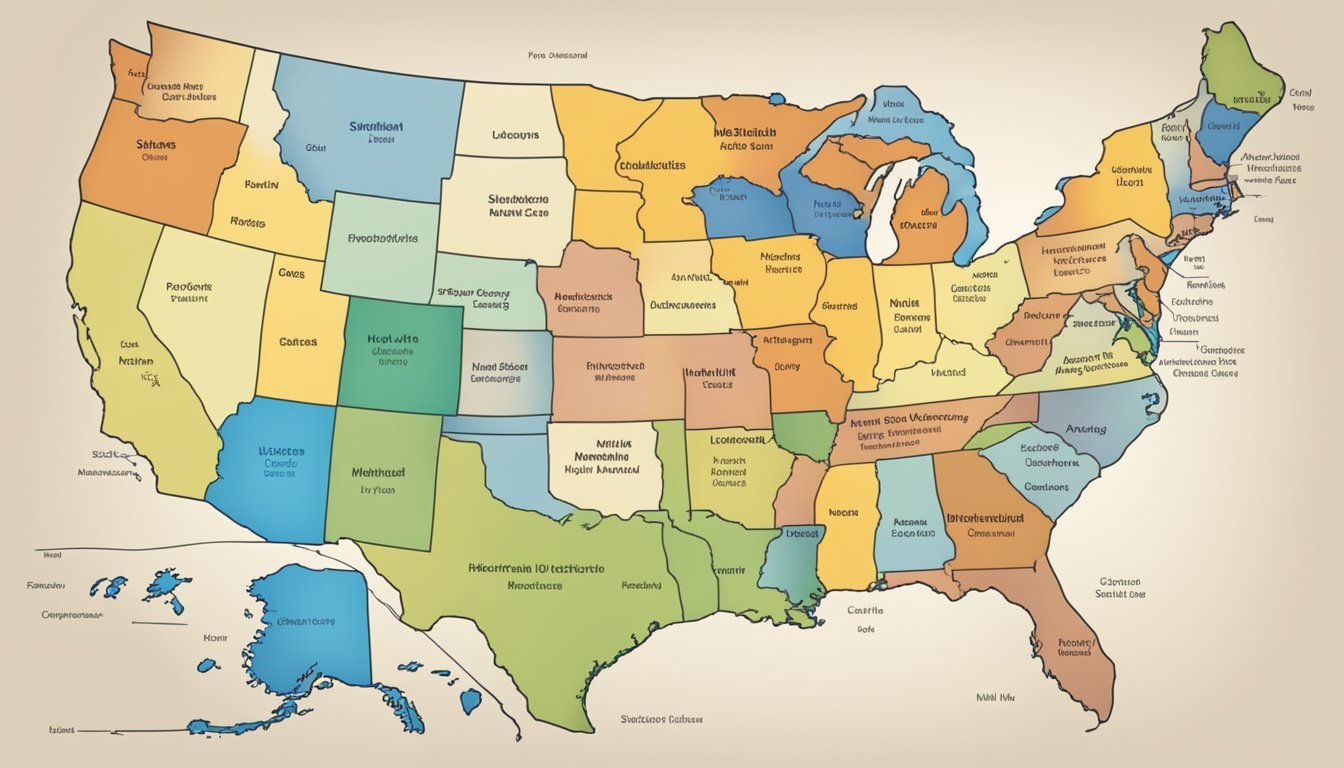The Legal Landscape of Raw Milk
Navigating the Regulations and Your Rights
Raw milk, or unpasteurized milk, is a subject of contention and considerable legal variability across the United States. Each state has its own set of regulations that dictate the legality of selling, distributing, and buying raw milk. These regulations stem from concerns over public health, as raw milk can harbor dangerous bacteria not eliminated unless the milk is pasteurized. Pasteurization is the process of heating milk to a temperature that kills harmful organisms, and it has been standard practice in milk production for decades to ensure safety. However, some consumers prefer raw milk for various reasons, including taste and nutritional benefits they believe are lost during pasteurization.
The legal landscape around raw milk is complex and often reflects a tug-of-war between consumer freedom and public health safeguards. While some states have rigid controls, only permitting the sale of raw milk as pet food or banning it outright, others allow it with specific restrictions. For instance, in some locations, sales are limited to on-farm transactions or require consumers to participate in herd-share programs, where they own a portion of the cow and the milk it produces. The allowance for raw milk sales continues to evolve, as seen in legislative changes and shifts in consumer preferences. Public health officials maintain a cautious stance, emphasizing the risks associated with consuming unpasteurized milk products.
As the debate over raw milk persists, understanding one's rights and the governing laws at local and state levels is essential. Being informed about the latest developments in the legal stance on raw milk ensures that consumers and producers can make educated choices within the framework of the law. Advocates of raw milk often cite personal choice and natural food rights, meanwhile, health officials and regulatory agencies emphasize consumer safety, pointing to pasteurization as a critical step in preventing foodborne illnesses. The intersection of consumer preference, public health concerns, and regulatory frameworks makes the topic of raw milk's legality a dynamic and ever-changing issue.
The raw milk legal landscape has been a topic of significant interest and debate in recent years, especially in relation to its potential impact on reduced allergies and its compatibility with paleo diets. The ongoing discussion around raw milk has brought attention to its unique raw milk chemistry and the potential benefits it may offer to individuals seeking natural and unprocessed dietary options.
As more consumers express interest in raw milk and its potential to support paleo diets, the raw milk business has experienced a notable upswing. This has contributed to a growing raw milk industry revolution, with increased accessibility and awareness of this alternative to conventional dairy products.
While the legal landscape surrounding raw milk varies from region to region, the positive dialogue around its potential health benefits, including its possible role in reduced allergies, continues to shape the conversation. As the raw milk business expands and the raw milk industry revolution gains momentum, it's evident that the legal landscape will continue to evolve, potentially opening new doors for those interested in incorporating raw milk into their dietary choices.
Raw Milk Fundamentals
In examining raw milk, it is crucial to understand both its basic definition and the health implications associated with its consumption.
What is Raw Milk?
Raw milk refers to milk that comes directly from the dairy animal without undergoing pasteurization—the process of heating milk to a specific temperature for a set period to kill harmful organisms. These organisms may include bacteria like E. coli, Salmonella, Campylobacter, and the bacteria that causes tuberculosis.
Health Benefits and Risks
Health Benefits:
Proponents of raw milk argue that it contains beneficial nutrients and enzymes that pasteurization may destroy.
They also claim that raw milk may contain probiotics, although experts state that it is not a significant source.
Health Risks:
Raw milk's lack of pasteurization means it can contain foodborne pathogens that are otherwise neutralized in pasteurized milk.
Consumption of raw milk has been linked to serious infections caused by bacteria, leading to food safety concerns.
Diseases such as tuberculosis, brucellosis, and infections from E. coli, Salmonella, and Campylobacter have been associated with raw milk consumption.
Regulatory Overview
The regulation of raw milk is a complex patchwork of federal and state-level rules, often stirring controversy due to public health concerns and consumer rights debates.
Federal Regulations
The sale of raw milk is prohibited across state lines, which is under the purview of the Food and Drug Administration (FDA). The FDA asserts this ban to control potential risks of foodborne illnesses, aligning with the public health guidelines suggested by the Centers for Disease Control and Prevention (CDC).
State-Specific Regulations
Regulation varies widely at the state level, with each state enforcing its own set of laws. For example, in New York, farmers can sell raw milk if they secure state permits and comply with strict production and sanitation standards overseen by the New York Department of Agriculture and Markets.
Permitted States: Direct on-farm sales are legal.
Restricted States: Sales are only permitted at retail stores under certain conditions.
Prohibition States: Absolutely no sales of raw milk are allowed.
Controversies in Raw Milk Regulation
Debate persists over raw milk's legal status, guided by opposing viewpoints on health benefits versus safety concerns. Health officials emphasize the risk of sickness from pathogens present in unpasteurized milk, while proponents advocate for consumer choice and purported health advantages.
State-by-State Legal Status
Raw milk sales and distribution laws in the United States are determined at the state level, resulting in a diverse legal landscape. Regulations can differ significantly, with some states allowing sales directly to consumers, while others impose constraints or outright bans.
States Allowing Sales
In the US, the legality of raw milk sales varies widely, but several states permit it with specific conditions:
California: Retail sales are legal.
Utah: Legal with recent legislation expanding herd share provisions.
Arizona: Direct sales allowed.
Maine: Allows sales directly to consumers.
Pennsylvania: Permits raw milk sales.
This list is not exhaustive, as the laws are subject to change and additional states may allow raw milk sales.
Variances in State Laws
States often set unique requirements for the sale of raw milk to ensure the health and safety of consumers:
Massachusetts: Local governments dictate raw milk laws, adhering to specific sections for compliance.
Illinois: Retailers may sell raw milk only from state-authorized producers, with advertising restrictions recently adjusted.
New Hampshire: Sales are legal with recorded instances of raw milk-related outbreaks.
The legislation can include a range of conditions from licensing and testing to restrictions on advertising and the location of sales.
States With Restrictions
Numerous states impose restrictions on raw milk sales, sometimes limiting distribution methods or requiring specific conditions to be met:
Iowa: No retail sales permitted.
Wisconsin: Farm sales allowed with restrictions.
North Dakota: Cow-share programs authorized under strict guidelines.
Florida: Sale of raw milk is legal for pet consumption only.
Individual states may also regulate the number of animals in herd shares or lay down standards for the production and handling of raw milk.
This overview provides a snapshot of the complex regulatory environment surrounding raw milk sales across various states. Laws are continually evolving, and stakeholders—including consumers and producers—should stay informed about the current regulations in their respective states.
Public Health and Safety Considerations
The consumption of raw milk poses significant public health challenges, among which the prevention of disease outbreaks and the establishment of food safety protocols are paramount. The following will detail the efforts to mitigate health risks associated with raw milk.
Disease Outbreaks and Surveillance
Raw milk can harbor dangerous microorganisms, such as Salmonella, E. coli, and Listeria, leading to foodborne illnesses. The Centers for Disease Control and Prevention (CDC) has reported numerous disease outbreaks linked to raw milk consumption. Between 1998 and 2011, the United States saw at least 148 outbreaks from raw milk, with significant numbers of illnesses and hospitalizations. Symptoms of these illnesses can include severe diarrhea, abdominal pain, and fever. Public health officials consistently monitor and investigate such outbreaks to protect consumers from health hazards.
Food Safety Protocols
The Food and Drug Administration (FDA) maintains strict food safety protocols concerning dairy. Pasteurization, heating milk to a specific temperature to kill harmful bacteria, is a central FDA-recommended safety measure. However, raw milk bypasses this critical process, which can result in the presence of pathogens. While proponents argue for hygienic practices at the point of production to ensure safety, the legal sale of raw milk is associated with a higher incidence of disease outbreak. Therefore, it's pivotal that raw milk producers adhere to the highest levels of hygiene and environmental health standards to mitigate risks.
Raw Milk Accessibility
Access to raw milk varies greatly depending on local laws, which affect both the producers and consumers. Key factors for accessibility include the legal framework surrounding on-farm sales and retail distribution.
Farmers and Dairies
On-farm Sales: Many states allow farmers and dairies to sell raw milk directly to consumers. This approach provides the freshest product but is limited by strict licensing and health regulations to ensure safety. In states like Iowa, on-farm sales have been legalized, giving consumers direct access to unpasteurized dairy.
Herd Share Programs: Some regions operate under herd share agreements where consumers buy a share of a cow or herd, entitling them to a portion of the milk produced. This arrangement is seen as a means for consumers to access raw milk, where direct sales might be restricted.
Retail and Consumer Accessibility
Retail Sales: The presence of raw milk in retail stores is less common and is heavily influenced by state legislation. While some states permit the sale of raw milk in retail environments, others have firm bans making it illegal to distribute through traditional retail sale avenues.
List of Accessibility by State:
Legal for Retail Sale: States such as New Mexico allow the sale of raw milk in retail stores without significant restrictions.
Legal Only on Farm: In contrast, states like Colorado may permit the sale of raw milk only through on-farm transactions or herd sharing, not in stores.
Illegal to Sell: In Canada, raw milk sales are prohibited entirely, emphasizing the international disparities in raw milk legislation.
By understanding the nuances of raw milk accessibility, from the conditions at the farm level to the potential presence in local stores, both consumers and producers can navigate the patchwork of regulations surrounding unpasteurized dairy products.
Legal Framework and Advocacy
The debate around raw milk is framed by the legal balancing act between consumer freedom and public health safety. Government regulations, advocacy groups, and health risks associated with harmful bacteria play pivotal roles in shaping policy.
Raw Milk Advocates
Advocates for raw milk often argue in favor of the individual's right to choose and the benefits of unprocessed foods. Freedom of choice is a cornerstone of their position, emphasizing the ability of consumers to decide what they consume. They claim that raw milk provides health benefits that pasteurized milk does not, such as natural probiotics. These groups actively lobby for the legalization of raw milk sales, which can include the requirement for producers to obtain a license and adhere to regulatory standards.
Opposing Views
Opponents include health professionals, public health officials, and food safety organizations. They highlight the health risks of consuming raw milk, linking it to pathogens like Listeria, Campylobacter, Salmonella, and E. coli. These groups stress that the potential dangers, including serious illness and outbreaks, outweigh the asserted benefits of raw milk. They support strict regulations or a ban to protect the public from foodborne illnesses.
Recent Legal Developments
Legislation surrounding raw milk continues to evolve. Some states have enacted laws to permit the retail sale of raw milk, contingent on the completion of inspections and licensing of producers' facilities. New laws often come with stringent regulations, such as clear labeling to inform consumers of potential health hazards. These legal changes reflect a growing trend toward increased access to raw milk, while still attempting to manage the associated health risks.
Production and Handling
In the realm of raw milk, strict guidelines for production and handling are pivotal for ensuring safety and quality. Regulatory bodies and health authorities like the Department of Agriculture enforce standards that dairies must comply with, from sanitation protocols to regular testing.
Standards and Practices
Raw milk production is subject to state-specific legislation, which typically encompasses rigorous standards for maintaining the health of dairy cows and the cleanliness of milking equipment. It is essential for producers to follow these guidelines to legally sell raw milk within certain states. The standards often include:
Licensing: Dairies must be licensed, demonstrating adherence to state laws.
Animal Health: Regular veterinary checks to ensure the wellbeing of dairy cows.
Milking Procedures: Defined protocols that dictate how milk is to be safely extracted.
Sanitation and Testing
Sanitation is paramount in raw milk production as it directly impacts the milk's safety for consumption. Dairies must implement:
Cleanliness Protocols: Daily cleaning and sanitization of all equipment in contact with milk.
Testing: Comprehensive and regular testing by the Department of Agriculture or health authorities is mandatory to detect any pathogens.
Through pasteurization, the risk of contamination could be reduced, but for raw milk, these sanitation and testing steps serve as critical safeguards.
Consumer Education and Responsibility
Informed consumer decisions in the context of raw milk hinge upon understanding the implications of labeling and having access to authoritative educational resources. Consumers bear the responsibility to weigh the public health risks associated with raw milk against personal choice.
Understanding Labels
Raw Milk Labeling Requirements:
State-Specific Regulations: The labels on raw milk products may vary greatly depending on the state. While some states require specific health warnings, others may not mandate such labels.
Health Warning Labels: Where required, labels will often alert consumers to the potential risks of consuming products that have not undergone pasteurization.
Source Information: Labels may include details about the farm of origin, ensuring transparency and traceability for public health monitoring.
Consumer Actions:
Review Labels Carefully: Pay attention to any health advisories and the origin of the milk.
Check State Guidelines: Be aware of your state's labeling requirements for raw milk.
Educational Resources
Access to Information:
Public Health Agencies: Entities such as the Centers for Disease Control and Prevention (CDC) and state health departments provide guidance on the risks of raw milk consumption.
Agriculture Departments: State agriculture departments offer guidelines on raw milk regulations, including safety standards and the legal framework.
Consumer Education Efforts:
Research: Utilize the wealth of online materials from public health and agricultural websites to educate oneself about raw milk.
Outreach Programs: Participate in local outreach programs or workshops offered by consumer rights groups about the safe handling and consumption of raw milk.
Future Trends and Outlook
The raw milk market is exhibiting a discernible growth trend, influenced by evolving consumer preferences and legal reforms. Anticipated developments in policy and legislative frameworks are poised to further shape this sector.
Market Trends
Raw milk's consumer base has experienced growth due to increased interest in natural and unprocessed foods. This is characterized by a shift towards products perceived to offer enhanced nutritional benefits and a desire for food produced through traditional farming methods. Market trends indicate that demands for raw milk may result in expanded distribution channels, potentially moving beyond direct farm sales to include specialty stores and farmers markets, where legalization permits.
Policy and Legislative Forecasts
Policy and legislative spheres are likely to continue to grapple with balancing consumer freedom with public health concerns. Proponents of raw milk advocate for legalization citing nutritional benefits and personal choice. However, safety risks associated with unpasteurized milk are significant factors in policy discussions. Future legislation may aim to create stringent regulatory frameworks that enable access while enforcing safety standards. In states where raw milk sale is legal, one could anticipate the implementation of rigorous testing and certification processes to ensure consumer protection.








